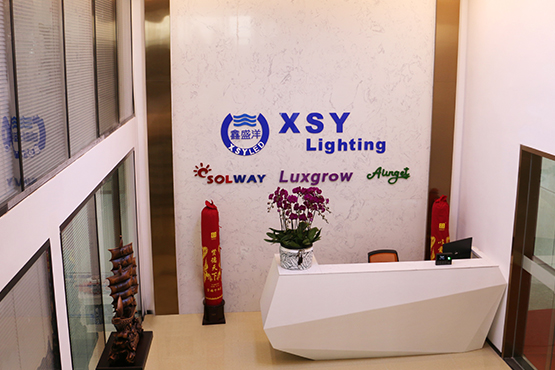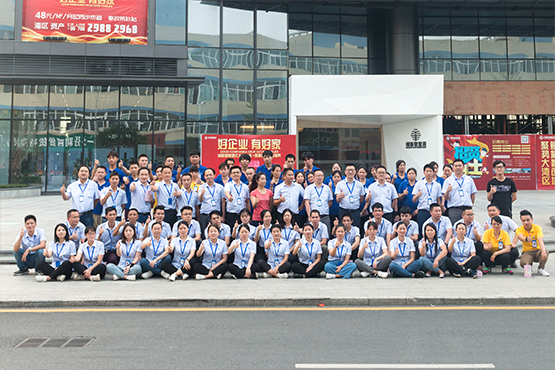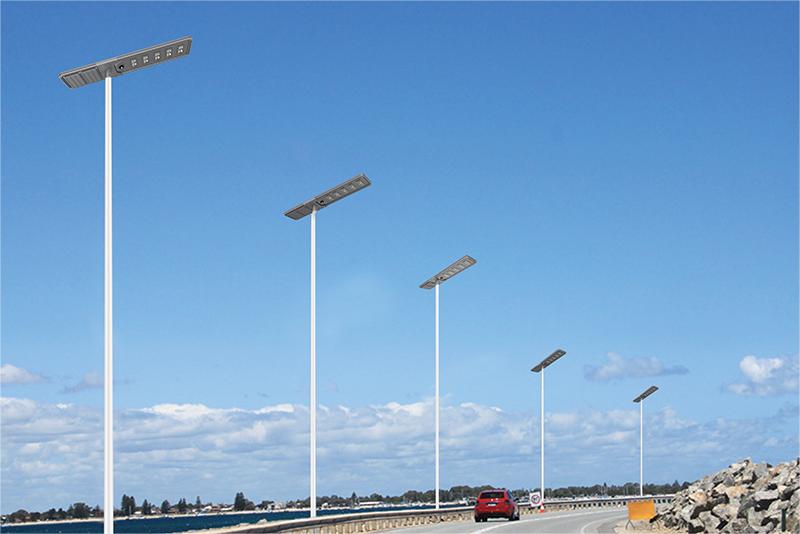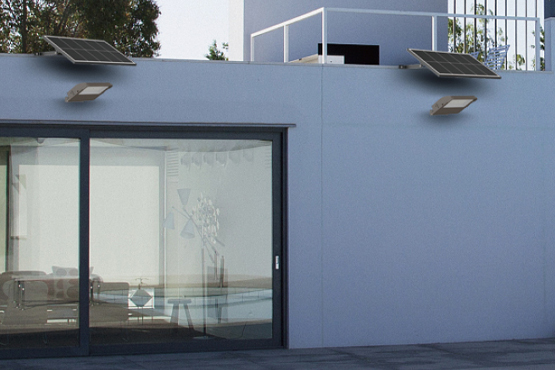With the continuous research into energy, the conversion efficiency of solar cells is constantly improving. Solar lights are the most widely used in street lamps, offering both convenience and energy efficiency. However, their widespread acceptance wasn't immediate. Initially, they were limited to small fixtures. Later, as they addressed lighting issues in areas without power, they became increasingly common. So, what are solar lights? What are the differences between solar lights and ordinary lights?
What are solar lights? The solar panel is the core component of a solar lamp and its most valuable component. It converts solar radiation into electrical energy or stores it in a battery. Among most solar cells, the most common and practical are monocrystalline silicon solar cells, polycrystalline silicon solar cells, and amorphous silicon solar cells. A high-performance charge and discharge controller is essential for solar lamps. To extend the battery's lifespan, the charge and discharge conditions must be controlled to prevent overcharging or deep charging. For environments with large temperature fluctuations, a qualified controller should also include temperature compensation.
What are the differences between solar lights and ordinary lights?
1. Lifespan Comparison of Solar and Ordinary Lights
Solar lights have a much longer lifespan than ordinary electric lights. For example, the solar cell module, the main component of solar light hardware, has a service life of 25 years; low-pressure sodium lamps have an average lifespan of 18,000 hours; low-voltage, high-efficiency, tri-color energy-saving lamps have an average lifespan of 6,000 hours; and ultra-bright LEDs have an average lifespan of over 50,000 hours. Solar-powered batteries have a lifespan of 2-5 years for batteries under 38AH; and 3-7 years for batteries between 38AH and 150AH. According to the local Price Bureau's regulation that residential communities charge a one-time maintenance fee of 6 yuan per square meter based on the total residential floor area, the initial investment in ordinary lights is significantly higher than that in solar lights. Overall, the cost savings of solar lights are quite significant.
2. Environmental Comparison of Solar and Ordinary Lights
Because solar lights use a low voltage of 12-24V, they offer stable voltage, reliable operation, and no safety hazards, making them ideal products for ecological communities and road administration departments. Conventional mains lights pose significant safety risks. As people's living environments constantly change, road reconstruction, landscape construction, power supply irregularities, and the intersecting construction of water and gas pipelines pose numerous risks.
3. Cost Comparison of Solar Lights and Conventional Lights
Solar lights offer a one-time investment with long-term benefits. Due to their simple wiring, they require no maintenance or expensive electricity bills. They pay back their investment in 6-7 years, saving over 1 million yuan in electricity and maintenance costs in the next 3-4 years. Hardware wholesale mains lights have high electricity costs and complex wiring, requiring constant maintenance. Sodium lamps are prone to failure, especially in unstable voltage conditions. As they age, wiring deteriorates, and maintenance costs increase year by year.
4. Installation Comparison of Solar Lights and Conventional Lights
When installing solar lights, there's no need for complex wiring. Simply build a concrete base and a battery pit within 1 meter, secured with galvanized bolts. Conventional mains lights require complex installation procedures. First, extensive civil engineering work, including laying cables, trenching and piping, threading cables within the pipes, and backfilling, consumes significant manpower, material, and financial resources. Finally, debugging is required, and any problems that arise can be costly. The above article explains what solar lamps are and how they differ from conventional lamps. In modern times, solar lamps are the most ideal lighting solution, offering convenience, aesthetics, and environmental friendliness. With improving living standards and the continuous advancement of scientific research, solar lamps will be widely adopted across various regions, allowing the light bestowed by the sun to be used by the people. This, in a sense, represents resource recycling.



















 English
English










 Scan WhatsApp
Scan WhatsApp Scan Wechat
Scan Wechat Scan WhatsApp
Scan WhatsApp Scan Wechat
Scan Wechat Consult Now
Consult Now






